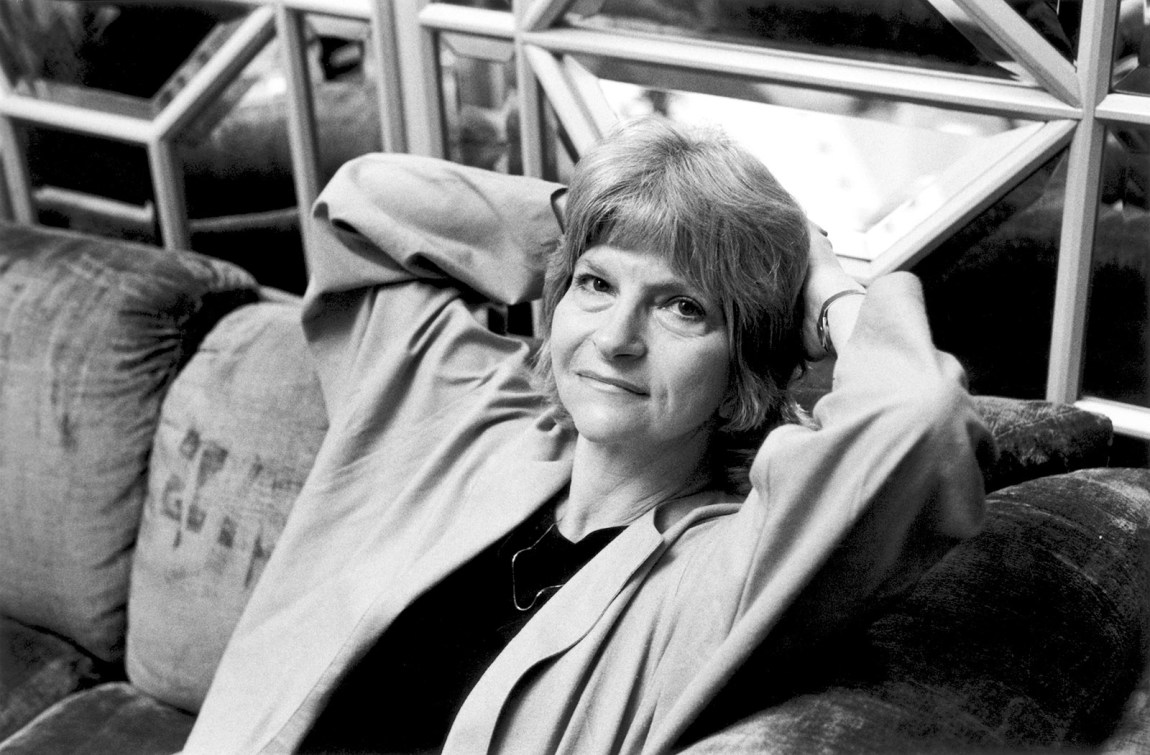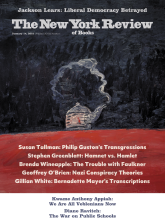The brilliant comic novelist, critic, and children’s literature scholar Alison Lurie, who died on December 3 at the age of ninety-four, contributed a review of Anthony Powell’s What’s Become of Waring? to the second issue of The New York Review, in June 1963; her sixty-third and last review in these pages—of Edmund Gordon’s biography of Angela Carter—appeared in March 2017. This amounts to more than half a century of witty and illuminating explorations of subjects as diverse as fairy tales, fashion, philosophy, and literature. Always mordantly funny, she was also erudite, compassionate, and a superlative stylist. In the tradition of twentieth-century British social satirists such as Powell, and David Lodge, she had a piercing eye for the foibles, aspirations, and misdemeanors of the intellectual classes.
Her best-known works, The War Between the Tates (1974) and Foreign Affairs (winner of the 1985 Pulitzer Prize for Fiction), are campus novels. The latter is about the sabbatical romances of American professors in London; its female protagonist—Vinnie (Virginia) Miner, a professor at Corinth University—is, at fifty-four, neither young nor beautiful, making her a radical choice for a romantic heroine. At one point Vinnie thinks to herself, as she sits alone on a bench at the zoo:
In most novels it is taken for granted that people over fifty are as set in their ways as elderly apple trees, and as permanently shaped and scarred by the years they have weathered. The literary convention is that nothing major can happen to them except through subtraction. They may be struck by lightning or pruned by the hand of man; they may grow weak or hollow; their sparse fruit may become misshapen, spotted, or sourly crabbed. They may endure these changes nobly or meanly. But they cannot, even under the best of conditions, put out new growth or burst into lush and unexpected bloom.
As Lurie—who was in her late fifties when Foreign Affairs was published—demonstrated again and again throughout her long career, the very act of noticing this convention can allow for its transcendence.
When I heard about Lurie’s death, I immediately started corresponding with friends who knew her. The essayist and biographer Phyllis Rose told me that Lurie had described one of her motivations for writing novels as follows: “You have an impulse to interfere in people’s lives, but you don’t want to interfere in the lives of your family and friends because that’s not right, so you interfere in the lives of imaginary people.” As a professor of creative writing at Cornell (where she was also a specialist in children’s literature; she coedited the seventy-three-volume Garland Library of Children’s Classics), Lurie found that she could potentially affect the directions of young writers’ lives by interfering in the lives of their imaginary people. The writer Jennifer Gilmore, who studied with her in the MFA program, told me that Lurie said, “You will not be a story writer. What you have to do is connect that old lady in your story and that young destructive girl in the other story, and then you have a novel.” “I fought this,” Gilmore said, “but of course she was right.”
Another writer, Ann Beattie—like Rose a friend from Key West, where Lurie spent part of each winter for nearly fifty years—described Lurie in an e-mail as “generous in all ways”:
She always hoped other people would be happy, or happier—even in terms of things that might ultimately seem a bit silly, like winning a prize, or if someone moved to a place more agreeable to them (she liked that word, “agreeable”), or got a dog.
Lurie believed that the profound and the everyday could not be separated, in literature as in life. In her essay “Witches and Fairies: Fitzgerald to Updike,” published in these pages in 1971, she analyzed the female archetypes of fairy tales and their appearance in twentieth-century fiction, observing:
In the classic fairy tale there are four principal roles for women: the princess, the poor girl who marries the prince, the fairy godmother or wise woman, and the wicked stepmother or witch.
Over time, she herself took on the role of fairy godmother or wisewoman to those she cared about—knitting at Gilmore’s bedside when she was hospitalized with a serious illness or, as Rose remembers her, “making potholders, or sewing new elastic into the waistbands of old skirts…endlessly curious, hands always busy.”
Lurie could be formidable. When I first met her in the 1990s, at a New York Review–related evening, she seemed rather frightening: her downturned mouth (caused by a forceps injury at birth) lent her a superficially stern aspect that made her wit seem more waspish. My impression was that she did not suffer fools. When I next saw her and her husband, Edward Hower, some years later at the Sewanee Writers’ Conference, I didn’t expect that she would remember me, but she did, and engaged warmly in conversation. (Wonderfully, they had rented for the week a crimson Dodge Charger, a muscle car, and we delighted at the incongruity.)
Advertisement
Whenever we met, I was impressed by her frankness and sometimes unsettled. What didn’t she notice? Rather like the television detective Columbo, she could seem in groups abstracted, even dotty, in retreat from the general conversation with her eyes on the ceiling or the floor. Then suddenly she would lean forward and interject a rapier-sharp opinion or observation. She might say that a writer didn’t express himself lucidly. Or point out that an argument was being prosecuted on false terms. Or, in a restaurant, note that a dish was poorly prepared, and in what way. Having deflated pretension and bombast, she would then sit back again in her chair and listen.
London was a place that Lurie adored, and although it was never her primary home, she had a flat there. Knowing that she often rented it out, I suggested that my sister, who’d moved to the UK, get in touch with her about it. Thus my sister became Lurie’s tenant for several years and eventually bought the flat, a light-filled top-floor aerie in Maida Vale, not far from the Regent’s Canal. Lurie left many things when she sold it, including her books on the shelves—volumes of James, Kafka, Joyce, Moravia; those of contemporaries and friends, such as Antonia Fraser, Alice Thomas Ellis, Jane Gardam, Diana Melly; various editions, including foreign ones, of her own novels. There is something especially intimate about a writer’s library. My sister kept all Lurie’s books, and it has felt like a gift for our family to share them.
My husband and I last saw Alison Lurie a year ago in Key West, where I was teaching for a week, and she and Edward invited us to their house. We sat in the courtyard in the shade of the splendid, peeling gumbo limbo trees and ate delicate finger sandwiches with our tea. We talked about London, about my sister and the flat, and about Anthony Powell, her good friend there. We also discussed passages from Vasily Grossman, Tolstoy, and Dostoevsky; my husband’s essay collection, which she had been reading; and her own book of essays, Words and Worlds: From Autobiography to Zippers (2019).
This past year seemed so long in many ways, but in others, so short: our marvelous conversation last January—the sort of eager but informal literary conversation that you think life will be filled with but isn’t—was, in social terms, a recent event, and it’s hard to believe that such an inspiring person has left us for good. Phyllis Rose offered me Lurie’s own advice for coping with this loss:
What I feel about her death she taught me to feel, talking about James Merrill, who was one of her most treasured friends: “I don’t really think of him as dead. I think he has just decided to move to Australia and is vexingly out of my life for the moment.”




